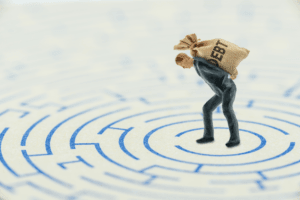Double-Declining Balance DDB Depreciation Method Definition With Formula

For example, if an asset has a useful life of 5 years, the sum of the digits 1 through 5 is equal to 15 (1 + 2 + 3 + 4 + 5). Over the life of the equipment, the maximum total amount of depreciation expense is $10,000. However, the amount of depreciation expense in any year depends on the number of images. This formula calculates the depreciation expense for each year of the asset’s useful life until the double declining balance method asset’s book value reaches zero or the end of its useful life, whichever comes first. The next chart displays the differences between straight line and double declining balance depreciation, with the first two years of depreciation significantly higher. DDB depreciation is less advantageous when a business owner wants to spread out the tax benefits of depreciation over the useful life of a product.
This is preferable for businesses that may not be profitable yet and therefore may not be able to capitalize on greater depreciation write-offs, or businesses that turn equipment over quickly. If the double-declining depreciation rate is 40%, the straight-line rate of depreciation shall be its half, i.e., 20%. The carrying value of an asset decreases more quickly in its earlier years under the straight line depreciation compared to the double-declining method. Double-declining depreciation charges lesser depreciation in the later years of an asset’s life. To calculate the double-declining depreciation expense for Sara, we first need to figure out the depreciation rate.
How the Double Declining Balance Depreciation Method Works
If you’re brand new to the concept, open another tab and check out our complete guide to depreciation. Then come back here—you’ll have the background knowledge you need to learn about double declining balance. Double declining balance depreciation isn’t a tongue twister invented by bored IRS employees—it’s a smart way to save money up front on business expenses. So, in the first year, the company would record a depreciation expense of $4,000. As a result, at the end of the first year, the book value of the machinery would be reduced to $6,000 ($10,000 – $4,000).
By dividing the $4 million depreciation expense by the purchase cost, the implied depreciation rate is 18.0% per year. For reporting purposes, accelerated depreciation results in the recognition of a greater depreciation expense in the initial years, which directly causes early-period profit margins to decline. The prior statement tends to be true for most fixed assets due to normal “wear and tear” from any consistent, constant usage. For accounting purposes, companies can use any of these methods, provided they align with the underlying usage of the assets. For tax purposes, only prescribed methods by the regional tax authority is allowed.
Real-World Examples of the double declining depreciation
We take monthly bookkeeping off your plate and deliver you your financial statements by the 15th or 20th of each month. In many countries, the Double Declining Balance Method is accepted for tax purposes. However, it is crucial to note that tax regulations can vary from one jurisdiction to another. Therefore, businesses should verify the specific tax rules and regulations in their region and consult with tax experts to ensure compliance. Businesses choose to use the Double Declining Balance Method when they want to accurately reflect the asset’s wear and tear pattern over time.

At the end of 10 years, the contra asset account Accumulated Depreciation will have a credit balance of $110,000. When this is combined with the debit balance of $115,000 in the asset account Fixtures, the book value of the fixtures will be $5,000 (which is equal to the estimated salvage value). The “sum-of-the-years’-digits” refers to adding the digits in the years of an asset’s useful life.
Sum of Years’ Digits Depreciation
The fraction uses the sum of all years’ digits as the denominator and starts with the largest digit in year 1 for the numerator. For example, a company that owns an asset with a useful life of five years will multiply the depreciable base by 5/15 in year 1, 4/15 in year 2, 3/15 in year 3, 2/15 in year 4, and 1/15 in year 5. The latter two are considered accelerated depreciation methods because they can be used by a company to claim greater depreciation expense in the early years of the asset’s useful life. At the end of an asset’s useful life, the total accumulated depreciation adds up to the same amount under all depreciation methods. Accumulated depreciation is the sum of all previous years’ depreciation expenses taken over the life of an asset.
- On the whole, DDB is not a generally easy depreciation method to implement.
- Unlike straight line depreciation, which stays consistent throughout the useful life of the asset, double declining balance depreciation is high the first year, and decreases each subsequent year.
- The next chart displays the differences between straight line and double declining balance depreciation, with the first two years of depreciation significantly higher.
- The company estimates that its useful life will be five years and its salvage value at the end of its useful life would be $1,250.
Because the book value declines as the asset ages and the rate stays constant, the depreciation charge falls each year. Download this accounting example in excel to help calculate your own Double Declining Depreciation problems. Notice in year 5, the truck is only depreciated by $129 because you’ve reached the salvage value of the truck. It has https://www.bookstime.com/articles/double-declining-balance-method a salvage value of $1000 at the end of its useful life of 5 years. Visit QuickBooks Online now and get 50% off for three months plus a free guided setup. Get instant access to lessons taught by experienced private equity pros and bulge bracket investment bankers including financial statement modeling, DCF, M&A, LBO, Comps and Excel Modeling.
